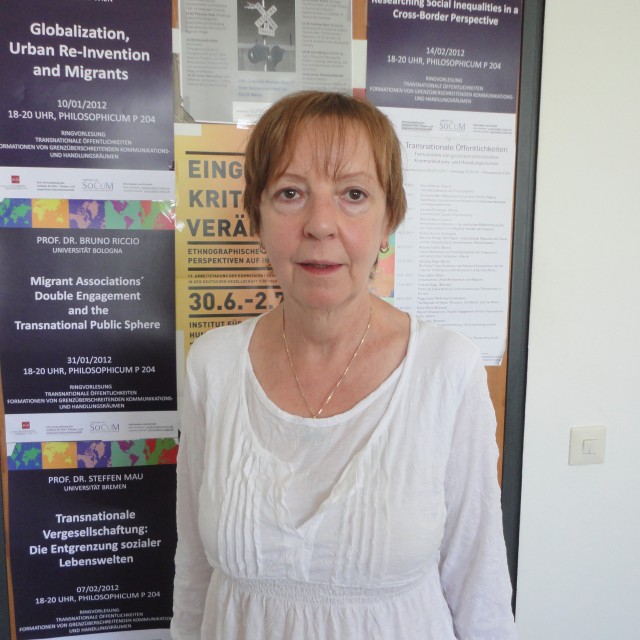The last hurdle
Sigrid Richter crossed the inner German border on November 11, 1986. After having spent 4,5 years in a prison, the government of West Germany paid for her release to the FRG. Her first stay in the West was the reception center for the fugitives from the East in Gießen. However, she only spent a short time there with her husband. They were soon picked up and taken care of by their friends from Dortmund. Starting a new life in West Germany wasn’t quite easy. Richter first had to deal with the necessary paperwork and visit the relevant authorities. It took a while before she got used to taking care of everything on her own. In the Soviet system, the state had directed her life and made all the decisions for her. Finally, Sigrid Richter was able to start a new life with her husband and son in Bochum.
Hodnocení
Abyste mohli hodnotit musíte se přihlásit!
Strecken
Diese Geschichte ist in keiner Strecke.
Kommentare

Sigrid Richter
Sigrid Richter was born in 1952 in Mecklenburg. She spent her childhood and youth in the GDR. Her school years as well as her studies were unburdened by problems. Shortly before the completion of her studies for a teacher, she met her future husband. However, his curriculum vitae had a major flaw: he was the son of a West-German father. This fact potently complicated their life and it was only through the relationship with her husband that Richter learned the hard way that life in the GDR could be very problematic indeed. This made her grew critical of the regime. Finally, Richter decided to emigrate with her family. As she had believed that the GDR was a state of law, she applies for a permission to leave the country in 1982. However, by this act she attracted the attention of the Stasi – the East-German secret security police – to the family. A putative messenger contacted the family with the offer to arrange an illegal emigration. Although the Richter family turned his offer down, they were nonetheless incarcerated for not having reported the messenger to the police. Thus they fell into the trap that had been staged by the Stasi. Richter was put into the Hoheneck female prison - separated from son and husband. After four and a half years, she and her husband were freed in exchange for payment by the Federal Republic of Germany. After a short time, the spouses managed to get their son to the West as well and thus the family was able to reunite.




